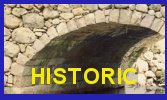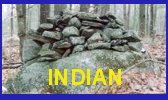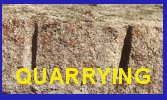



 |
 |
 |
 |
|
|
|
Native American Stone Structures |
|
|
Native American Ceremonial Sites Native Americans built ceremonial sites for spiritual purposes. Spirits ruled and controlled everything in life. They controlled animals, rain, growing plants, everything that was needed to survive. Spirits are living beings like the Christian's God. To get the spirits to work with the people Natives created ceremonies in which they could communicate their needs and make offerings. An example is seen in a southwest winter solstice ceremony. “The ladder prayer stick is used in the Winter Solstice ceremony in a symbolic way, being in fact an offering to the sun, which is supposed to be weary at that time and in need of assistance in climbing from his home in the under-world to the sky.” (Fewkes 1906) The people used the ceremony to assist the sun spirit by offering it a ladder to climb from the underworld to the upperworld. In doing so, the spirit travels from one place to another place with the help of people. People were vital to the ceremony and the ceremony was vital to the spirit. There was an interdependence between people and spirits. Ceremonial sites consist of two major components: (1) stone structures and (2) the natural landscape. The two components are inter-related to such a point that Native Americans themselves have come to refer to such places as Ceremonial Stone Landscapes. This relationship is evident at South Street in the use of boulders and outcrops to create ceremonial cairns. Fewkes, J. Walter,1906, Hopi Shrines Near the East Mesa, Arizona. American Anthropologist, New Series, 8: 346-375. |
|
Native American Historical Beliefs and Cultural Concepts |
|
Stonehenge: The Place Where Sun Spirit Entered & Exited Underworld |
|
Radiocarbon (C-14), Optically Stimulated Luminescence (OSL), and Archaeological Dated Native American (Indigenous) Stone Structures in Northeastern United States |
|
OTHER RESOURCES Mary Gage, “New England Native American Spirit Structures.” Bulletin of the Massachusetts Archaeological Society 74 (1): 25-32 (2013). [PDF Version] James Gage, “Field Clearing: Stone Removal and Disposal Practices in Agriculture & Farming.” Bulletin of the Archaeological Society of Connecticut 76:33-81 (2014). [PDF Version] Mary Gage, “Testing the Stockpiling and Field Stone Clearing Pile Theories” Bulletin of the Massachusetts Archaeological Society 76 (1): 2-27 (2015) [PDF Version] Mary Gage and James Gage, “How to Identify and Distinguish Native American Ceremonial Stone Structures from Historic Farm Structures” Bulletin of the Archaeological Society of Connecticut 77:17-40 (2015) [PDF Version] Mary Gage and James Gage, “Stone Chambers: Root Cellars, Ice Houses, or Native American Ceremonial Structures?” Bulletin of the Archaeological Society of Connecticut 77:69-100 (2015) [PDF Version] Mary Gage, “The Challenge: Should Ceremonial Cairns and Field Clearing Piles be Characterized by Diversity or Consistency?” Bulletin of the Archaeological Society of Connecticut 78: 33-50 (2016) [PDF Version] VIDEO RESOURCES Mystery of The Red Paint People Documentary Film by Ted Timreck (1987) - References to cairns, standing stones, and other stone structures View at InternetArchive,org (Free) |
|
|
||||||||||||||||||||||||||||||||||||||||||||||||||||||||||||||||||||||||||||||||||||||||||||||||||||||||||||||||||||||||||||||||||||||||||||||||||||||||||||||||||||||||
|
|
|
||||||||||||||||||||||||
|
|
||||||||||||||||||||||||||||||||||||||||||||||||||||||||||||||||||||||||||||||||||||
|
|
 |
|||